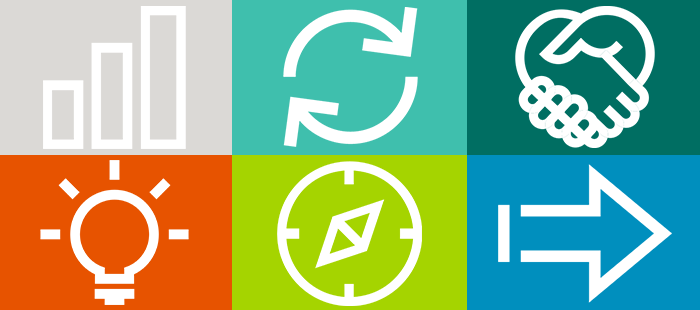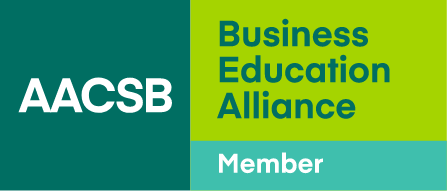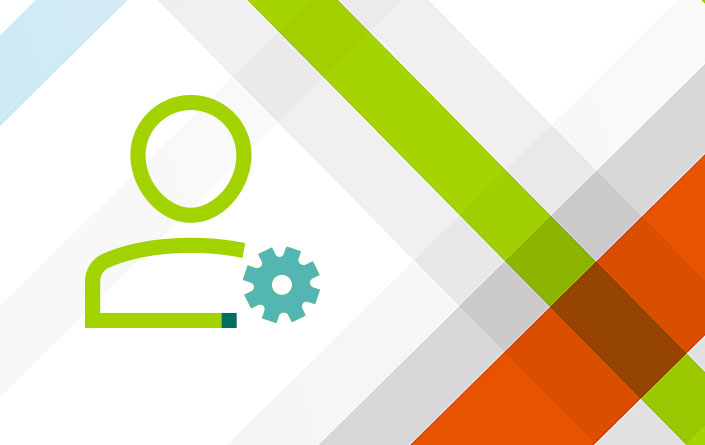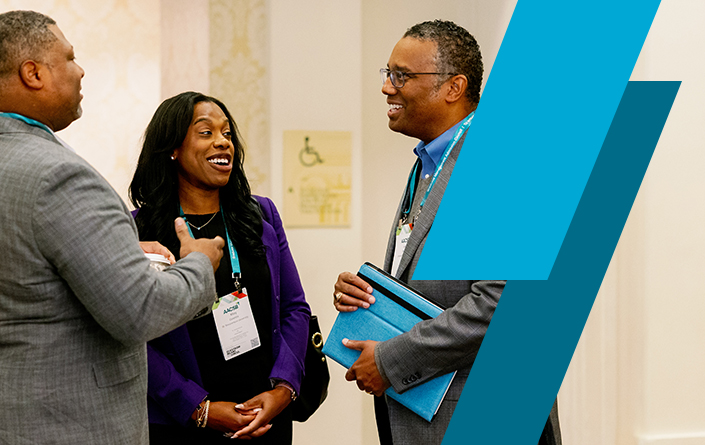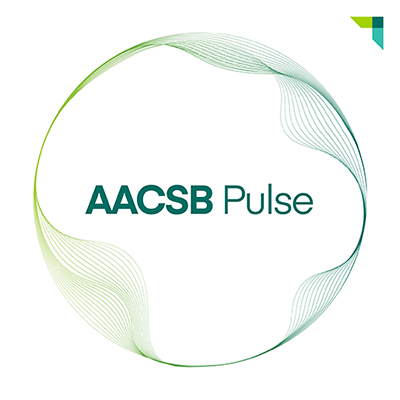Is a Business Librarian a Professor’s Best Friend?
- Today’s academic libraries offer a range of services that help faculty manage the data associated with scholarly research.
- Librarians can manage persistent researcher identifiers to make sure bibliographic information is synchronized across platforms.
- Librarians also manage institutional repositories that archive and provide open access to faculty research.
Faculty are expected to contribute to their universities through their research, teaching, and service. In an increasingly data-driven world, faculty substantiate their value to their institutions through metrics that assess all these dimensions, particularly research. Most universities also consider real-time research and impact data as they make decisions regarding tenure, promotion, and retention, even though the process by which they make such decisions varies by institution.
How can faculty not only make scholarly contributions, but also ensure that data about their research are captured and communicated across institutional platforms? How can faculty promote their scholarship both within and outside of the university, enhancing their positions as thought leaders within the field and around the world?
Perhaps surprisingly, they can turn to libraries. In fact, a librarian can be a professor’s best friend for four key reasons.
Libraries Provide Research Data Services
The offerings of the modern academic library extend well beyond helping users access and cite print and digital information—though that, to be sure, is still a common function. But in recent years, academic libraries have made an important pivot to align more closely with institutional priorities. Many libraries now develop and host platforms that support data services, grant compliance, research data management (RDM), and research information management systems (RIMS).
For example, Harvard Business School’s Baker Library offers bespoke, fee-based statistical and data services that support faculty researchers, research assistants, and doctoral students. Columbia University Libraries hold consultations and workshops focused on the management of research data. These sessions equip students, faculty, and staff with the skills to use tools such as Python, R, and SPSS to mine and leverage data. Columbia’s RDM services also include consultations tailored to the data management plans of specific researchers. Such plans often are required by philanthropic organizations and government agencies for grant compliance.
Today, a number of libraries offer RIMS services, which allow institutions and individual faculty to track how they are achieving their research goals. I’m a librarian and the head of the McLeod Business Library at William & Mary’s Raymond A. Mason School of Business in Williamsburg, Virginia. In partnership with the school’s academic affairs unit, we started offering RIMS services to faculty in 2019 in an effort to standardize data for reporting and accreditation purposes.
Our library and academic affairs staff first solicited up-to-date curriculum vitae (CVs) from faculty in order to create protocols for Watermark Faculty Success (formerly Digital Measures), a software service that tracks faculty activity. Next, library staff and the school’s business intelligence unit used robotic process automation software UiPath to populate the profiles of business faculty with bibliographic data. Mike Maddalena and I wrote a chapter on our successes in using UiPath (“We Could Program a Bot to Do That!”) in The Rise of AI, a book edited by Sandy Hervieux and Amanda Wheatley that discusses how artificial intelligence is used in academic libraries.
The McLeod staff provides ongoing faculty support by continuing to enter updated data as new research is published. This reduces the need for faculty to manually input their data and manage their profiles. It also ensures accuracy, which makes data more findable and increases interoperability across systems.
Librarians Standardize Faculty IDs
Business faculty also can turn to librarians as they seek to expand the reach of their scholarly work. Because library staff have expertise in structured and linked data, and because they provide support for open access research, they can help faculty synchronize their bibliographic information across platforms.
For example, librarians can help faculty use and manage persistent researcher identifiers that differentiate scholars with similar names. The most prominent of these include the ResearcherID from Clarivate’s Web of Science; the ScopusID from Elsevier’s Scopus database; and the Open Researcher and Contributor ID, known as ORCiD.
Business faculty also can turn to librarians as they seek to expand the reach of their scholarly work. Library staff can help faculty synchronize their bibliographic information across platforms.
To ensure that the Scopus IDs are correct for all the business faculty at William & Mary, the staff at the McLeod Library compares each ScopusID with the researcher’s CV and makes changes accordingly. McLeod librarians also work with the associate dean of faculty and academic affairs to promote and support ORCiD as a tool for disambiguating researchers. To that end, library staff work with faculty to create ORCiD profiles and populate publications.
Persistent researcher identifiers are an integral part of many grant application and manuscript submission processes. Because they sync across platforms, they are key to integrating bibliographic data with citation indexes and RIMS, as well as with institutional repositories, which have an increasingly important role to play in enhancing the impact of scholarship.
Libraries Promote Open Access
Institutional repositories preserve and provide free access to the research produced by faculty at that institution. While a number of other archives exist—such as those maintained by academic social networks—faculty enjoy several advantages when they upload content to institutional repositories.
For instance, they benefit from additional platform-specific usage and citation metrics. Because their work is not barricaded behind a paywall, their scholarship will receive greater recognition both domestically and abroad, which increases their potential for making greater societal impact. This is particularly valuable if their work addresses any of the United Nations’ Sustainable Development Goals.
Because librarians often are the ones maintaining institutional repositories, they have unique expertise in this area. Librarians regularly provide infrastructural support for open repositories by obtaining citation data and determining open access and copyright permissions. Librarians also can help faculty create profiles, can determine which of their content can be published in the repository, and can work with professors to sync their persistent researcher IDs across systems to increase their research impact.
Librarians Track Research Impact Measures
There’s one final reason librarians can seem like a professor’s best friend: They can help faculty prepare for annual reviews and participate in tenure and promotion exercises. A librarian can advise researchers on the qualitative and quantitative indicators they can use to tell their stories and demonstrate the impact of their scholarship.
In particular, business librarians often are aware of disciplinary publishing requirements and incentives centered around specific journal lists. They can work with faculty to identify available data sources and bibliometric indicators, as these are often procured by and hosted through the library. It’s true that platforms such as Google Scholar, Clarivate’s Web of Science and InCites, and Elsevier’s Scopus and SciVal also supply this data, but each one has its own drawbacks. For instance, Google Scholar returns data in ways that are sometimes difficult to analyze; Scopus and Web of Science offer only limited coverage of books and conference proceedings; and SciVal and InCites offer proprietary metrics that may not always provide transparent, replicable methodologies outside of the platform.
Librarians can help faculty prepare for annual reviews, participate in tenure and promotion exercises, and demonstrate the impact of their scholarship.
Librarians not only can assist faculty in obtaining data, but also can advise researchers on the benefits and limitations of using these indicators when compiling information for tenure and promotion discussions. At William & Mary, librarians rely on frameworks and tools such as the Leiden Manifesto, DORA, SCOPE, and Using SciVal Responsibly to guide faculty in metrics exercises.
Within the McLeod Business Library, librarians assess publication outputs through a variety of indicators. For instance, we benchmark outputs against peer, aspirant, and competitor institutions. We also advise faculty and administrators on the utility of traditional metrics, altmetrics, and supplemental metrics—including PlumAnalytics, which tracks the views, downloads, and global viewership of research posted in institutional and open repositories.
Spreading the Word
While not every school has a dedicated business library, most academic libraries assign a staff member to be a liaison with the business school. These librarians can connect faculty to the online resources available at their institutions and provide an interlibrary loan service that enables faculty to borrow materials from other libraries. Unfortunately, this does not extend to proprietary business databases that require special licensing that restrict sharing beyond the home institution.
But even at schools with dedicated academic libraries, and despite the fact that academic libraries offer such valuable services, libraries sometimes are underutilized by the very people they are meant to serve. Ultimately, several factors contribute to whether or not business faculty are likely to turn to their libraries for help: how close the library is to the business college, how deeply library instruction is integrated into the curriculum, whether the library reports to the business school or the main library administration, and how much funding is available. The model of librarianship deployed also will affect how likely faculty will be to use library resources.
For many libraries, one of the biggest challenges is educating faculty about library services. At William & Mary, I send updates about database, journal, and service changes to the business faculty listserv, and I reach out to individual faculty members to ask targeted questions about resource usage. I also attend business faculty meetings when possible, and I occasionally present just-in-time information at these meetings. I have had my biggest successes at engaging faculty when I received endorsements from the associate dean of faculty and academic affairs.
Many libraries offer workshops tailored to faculty, though it can be challenging to schedule these events at times when faculty can and will attend. I’ve found that training sessions will be most well-attended when I plan them with faculty who either co-sponsor or endorse the training. Many librarians often participate in new faculty orientation or provide individual consultations with faculty to make them aware of library services.
If professors or administrators are not certain how a library can support their teaching and research, I recommend that they ask! Librarians can add valuable voices to a college’s initiatives and strategic plans when we are included in conversations and asked to serve on committees. We want to be partners in the institution’s educational and research missions.
Next Steps for Libraries
As partners in the research enterprise, and as scholars in their own right, librarians are aware of the ever-increasing institutional demands on faculty to create high-quality, impactful scholarship and curricula. While library models, resources, and services vary by institution, librarians are knowledgeable about best practices in discovering and organizing information, structuring data, archiving and preserving scholarship, and assessing impact.
Most important, librarians understand faculty publication needs and behaviors, and they want to help scholars achieve their research goals. Business faculty should feel encouraged to reach out to their libraries—and their librarians—to begin the conversation.

